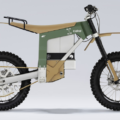Take a good look around you… because everything you know could one day eventually transform into a crab. Alright, maybe “everything” is a bit of a stretch, but there is a ring of truth here since many crustaceans are likely to turn into crabs on down the line, thanks to a strange process that evolutionary biologists call carcinization.
Background: What is carcinization?
Carcinization is a term that’s been in use for 140 years, describing the evolution from crustaceans into crabs, or at least organisms with a crab-like appearance. A creature resembling a lobster or a hermit crab, for instance, tends to evolve into something that looks like our stereotypical crab—short and squat with mean pinchers.
Before we dig deeper into carcinization, it’s also worth asking: what is a crab?
You might think the king crab or a hairy stone crab are crabs—which is fair, given their names—but they’re not real crabs. They’re posers, just like porcelain crabs and hermit crabs.
Those “crabs” listed above are the Anomura, a family of crustaceans. Their counterpart, the true crab family, is the brachyurans—a group whose crab shape is ancestral.
Confusing? Well, think of it this way. As anyone who watches “Downton Abbey” or “Crazy Rich Asians” would know, there’s old money and there’s new money. Both groups are rich, and upon first glance, probably impossible to distinguish between. Both groups dress alike for the most part and do the same kind of social activities. But old money has wealth that runs back generations, and new money doesn’t.
Brachyurans are “old money” type crabs, whose crabbiness is ancestral, and Anomura are “new money,” for they’ve more recently come into their crab-like form.
So carcinization, essentially, is the process of making species in the Anomura family look more like a species from the brachyurans family. The hermit crab evolved into the king crab. It’s Mother Nature’s way of saying “eat the rich.”
Analysis: Why is it happening?
While carcinization is not a new scientific discovery, there is much about the evolutionary process that remains unknown. Scientists are unsure about how many species have undergone carcinization, and also about why.


“There has to be some kind of evolutionary advantage to being this crablike shape,” said Heather Bracken-Grissom, a marine invertebrates expert and associate professor at Florida International University.
With the help of an NSF grant, a team of researchers, including Bracken-Grissom, are looking to uncover more about this phenomenon.
Some possible explanations behind carcinization are that it could offer species the ability to colonize new habitats, or to diversify into new species, one that’s harder to prey upon.
“The pleon being folded under the body makes a smaller target for predators. Perhaps crabs are better able to fit into small places to hide. Perhaps they can move faster with the ability to walk sideways,” said Jo Wolfe, a researcher at the Department of Organismic & Evolutionary Biology at Harvard University and first author of the study on carcinization.
“But there isn’t yet direct experimental evidence comparing carcinized and uncarcinized forms as to how they may perform at some of these strategies.”
Complicating matters is the fact that decarcinization is also an existing phenomena. The frog crab is one example of such a process.
“Whatever the advantages are, they do not apply in all habitats because some groups have also lost carcinization,” Wolfe said.
Outlook: The Ancestral Crab
Studying carcinization can also lead researchers to a more comprehensive understanding of evolution.
“Biologists want to know how to “predict” if a phenotype, or morphology, would evolve in a group,” said Bracken-Grissom.
“Examining crab evolution provides a macroevolutionary timescale of 250 million years ago for which, with enough phylogenetic and genomic data, we might be able to predict the morphology that would result.”
In their search to learn more about carcinization, the researchers are also on the hunt for the common ancestor of the brachyurans and Anomura families.
So don’t worry, your friends and family are safe from the grasp of this strange facet of evolution (at least, for now). Until more is known about the crustacean-to-crab pipeline, perhaps we should cherish the moments we have left with the lobsters and shrimps of the world.
